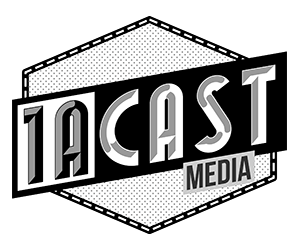by Greg the Engineer  A few years ago, my home town, Forest Grove, Oregon, provided free compact fluorescent lightbulbs (CFL) to its citizenry as as a way to reduce their energy costs.
A few years ago, my home town, Forest Grove, Oregon, provided free compact fluorescent lightbulbs (CFL) to its citizenry as as a way to reduce their energy costs.
Well, we were told that the bulbs would last longer, consume far less electricity and provide a “green” alternative to old-style incandescent bulbs. Being a person committed to always doing what’s best for the environment, I decided to give the new bulbs a try.
After all, I drive very fuel-efficient Subarus with both having only synthetic non-toxic
lubricants throughout and environmentally-safe non-toxic coolant. I won’t be killing any condors in the near future should my radiators spring a leak. And, my wife considers me to be a recycling fanatic. Thus, what could be more easy to help the environment than to simply screw-in some free CFL bulbs? Or, so I thought….
 |
| Earth Friends Photo |
My experience with the new CFL bulbs has been quite the opposite of what was promised. The promise of a much longer bulb life proved to be absolutely false. My electricity bill has not been reduced. Being an engineer, I keep monthly records of such things going back several years. And, my wife would get sick after being in rooms for too long where the CFL bulbs had been installed. Not all our rooms have CFL bulbs as my wife refused to allow me to install them in some areas as they were cosmetically unacceptable.
I have discovered some very scary things about these bulbs. First of all, they contain mercury. Not only are CFLs much more expensive than incandescent bulbs and emit light that many regard as inferior to incandescent bulbs, they pose a nightmare if they break and require special disposal procedures. As each CFL contains 5 milligrams of mercury, at the Maine “safety” standard of 300 nanograms per cubic meter, it would take 16,667 cubic meters of soil to “safely” contain all the mercury in a single CFL!!! While CFL vendors and environmentalists tout the energy cost savings of CFLs, they conveniently omit the personal, environmental and societal costs and risks of CFL disposal.
According to mercury expert John Moore in a story published in Crusador:
“The new long-life, low-energy fluorescent light bulb that is in the marketplace is a mercury light bulb. What makes fluorescents work is that you put a coating on the inside of the bulb, then you put mercury in it, then you activate the mercury and it lights the tube. Unfortunately, over time the mercury escapes through the glass!!!! The mercury cannot be contained; it will pass through the glass. Mercury will dissolve all but 3 metals: iron, platinum, and nickel according to the chemistry handbook that is used at universities. It’s an unbelievable material. Mercury is also the only metal that goes from a liquid to a vapor form, and it starts doing that at 50 degrees below zero Fahrenheit. It’s really the genie out of the bottle.”
The hazardous CFL bulb is being pushed by companies such as Wal-Mart, which wants to sell 100 million CFLs at five times the cost of incandescent bulbs, and, surprisingly, environmentalists. It’s quite odd that environmentalists have embraced the CFL, which cannot now and will not in the foreseeable future be made without mercury. Given that there are about 4 billion lightbulb sockets in American households, we’re looking at the possibility of creating billions of hazardous waste sites – one being your home if you break a CFL bulb! Usually, environmentalists want hazardous materials out of, not in, our homes.
As the activist group Environmental Defense urges us to buy CFLs, it defines mercury on a separate part of its Web site as a “highly toxic heavy metal that can cause brain damage and learning disabilities in fetuses and children” and as “one of the most poisonous forms of pollution.”
Greenpeace also recommends CFLs while simultaneously bemoaning contamination caused by a mercury thermometer factory in India. But where are mercury-containing CFLs made? Not in the U.S., under strict environmental regulation. CFLs are made in India and China, where environmental standards are virtually non-existent.
If you break a CFL bulb, don’t vacuum bulb debris because a standard vacuum will spread mercury-containing dust throughout the area and contaminate the vacuum. Ventilate the area and reduce the temperature. Wear protective equipment like goggles, coveralls and a dust mask. Collect the waste material into an airtight container. Pat the area with the sticky side of tape. Wipe with a damp cloth. Finally, check with local authorities to see where hazardous waste may be properly disposed.
Most CFLs, as many consumers have discovered to their dismay, do not function properly with dimmer switches. They need the full voltage to operate and attempting to use a CFL with a dimmer switch voids it’s warranty. According to GE, CFLs should not be used in an enclosed fixture, like a ceiling fan light because this can cause them to overheat. Applications that produce vibration should also be avoided, so CFLs are a poor choice for garage door openers and are doubly bad for ceiling fans. Additionally, CFLs tend to literally burn out at the end of their life, melting plastic and other components, emitting smoke and toxic vapor. In rare instances this has led to house fires. The fire issue, fortunately, has seemingly been addressed – we shall see.
Compact fluorescent lights are known to cause radio frequency interference with radios, wireless networks and cordless phones. We do not yet know the health risks of all of the RF signals we seem to be determined to bombard ourselves with of late; thus, will have to wait and see if the noise generated by CFL bulbs pose a heath risk to humans.
Beginning in 2012, thanks to a new federal law, Edison’s incandescent light bulb, the very symbol of American innovation for over a century, will be banned. Many people are unaware of the approaching light bulb ban, probably due, at least in part to the fact that Congress designed the ban to take effect several years after it was passed. Compact fluorescent lighting or LED lighting will soon be the only electric lighting options for household use. Now, think of that. No more traditional C7 or C9 Christmas bulbs!!! God forbid!!!
So to be “green,” one must buy toxic mercury-containing, mercury outgassing CFL bulbs made in China which do not last that much longer than the old bulbs we’ve used since Edison and may not reduce your electricity bill. That’s brilliance only politicians following a very generous campaign donor’s agenda would exhibit. Do you remember Melamine in milk that blows out your kidneys coming from China? How about all the drywall that has contaminated millions of homes with toxins? How about all the children’s toys loaded with lead and cadmium? That’s just scratching the surface. So, when it comes to CFLs, users beware!
There is hope. Americans will soon be able to buy LED lighting for just about any application. But, there will be a gap between when LEDs will be available for all applications and the phase out of incandescent bulbs. Thus, we will be forced to buy ONLY CFL bulbs!!! This is a very dangerous threat to your health and the health of your family – especially your children!!!!!!!!!!!!!!!!!
Please contact your elected representatives and demand that they repeal the government mandate that all incandescent light bulbs be removed from the US market by 2012. To save our health and truly protect our environment, we need time for LED lighting products to fully saturate the market.
Useful links:
http://www.defendingthetruth.com/topic/15052-the-great-cfl-light-bulb-scam/
http://www.healthtruthrevealed.com/articles/1157092501/article



